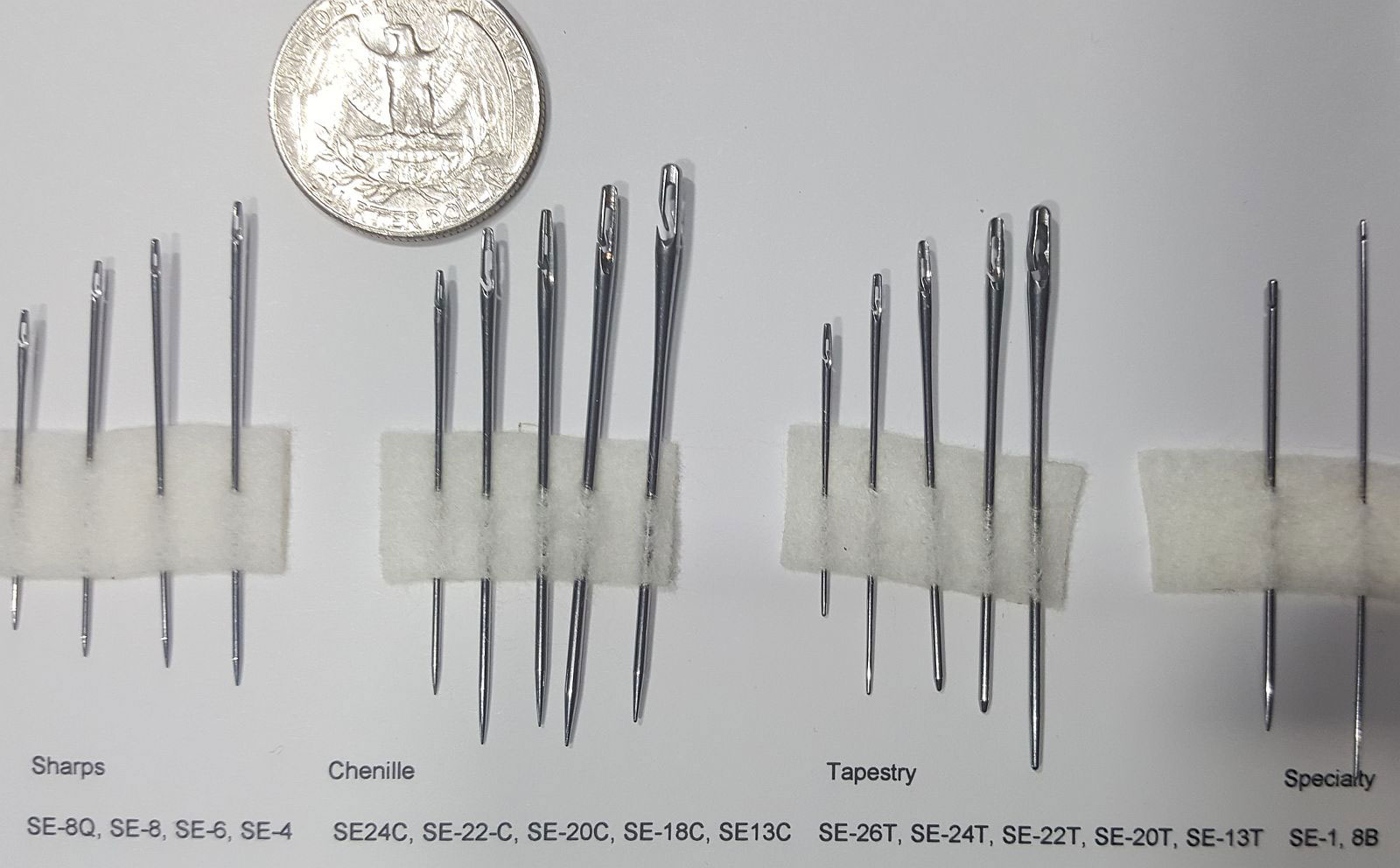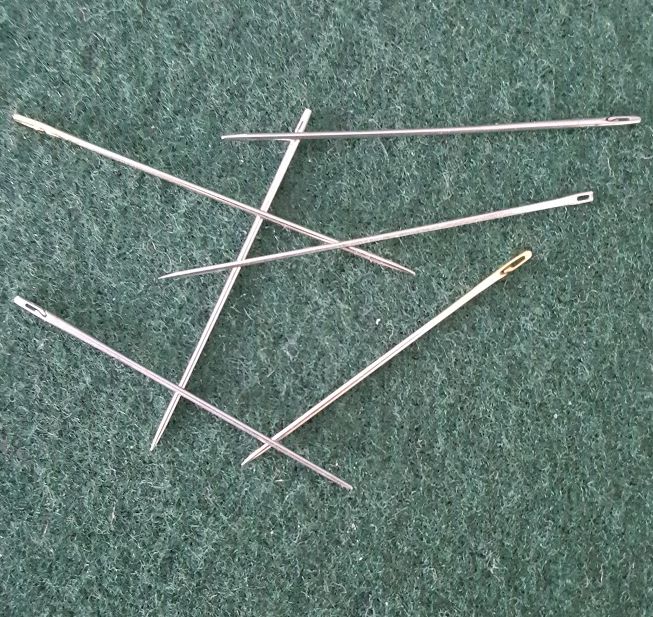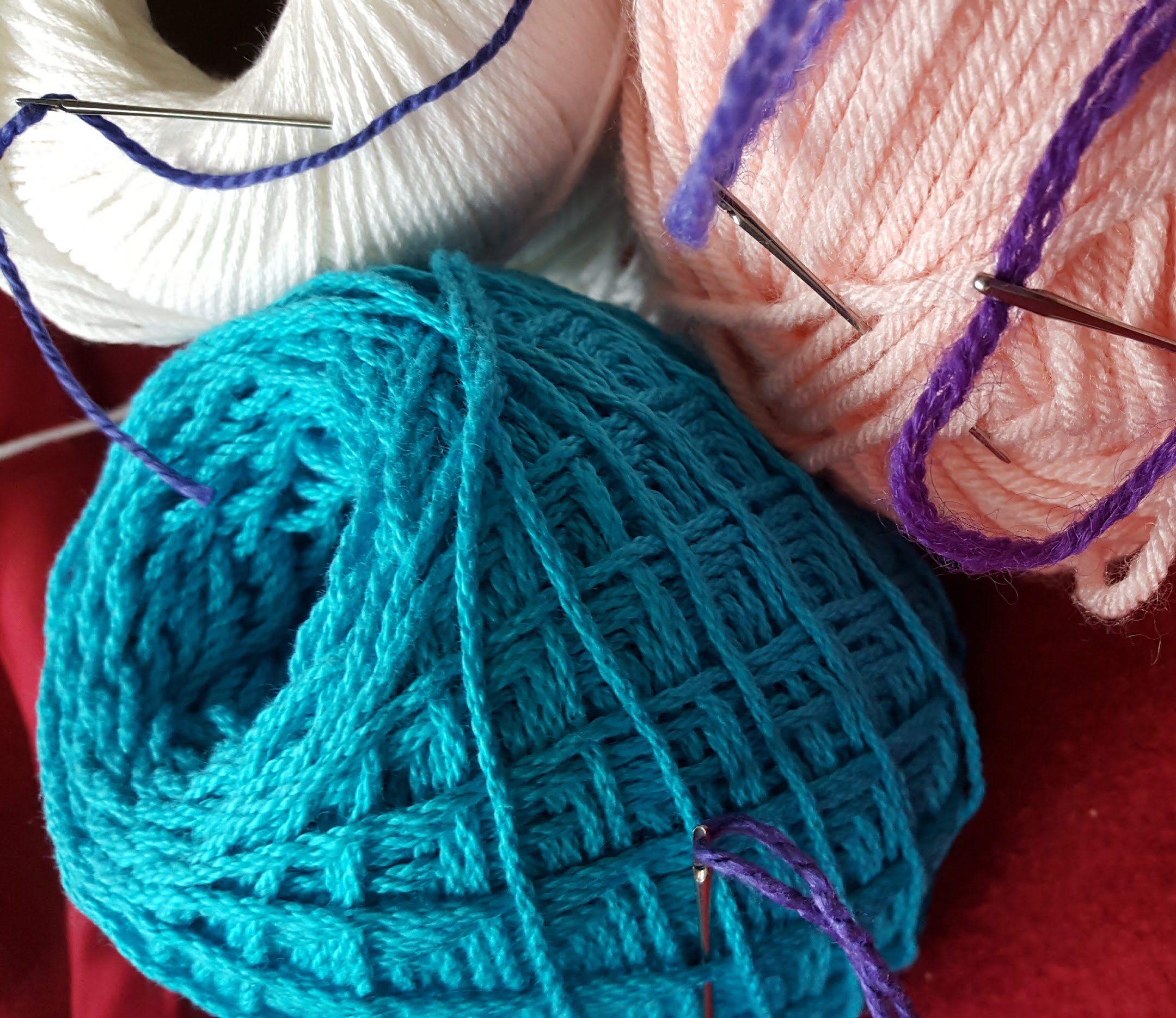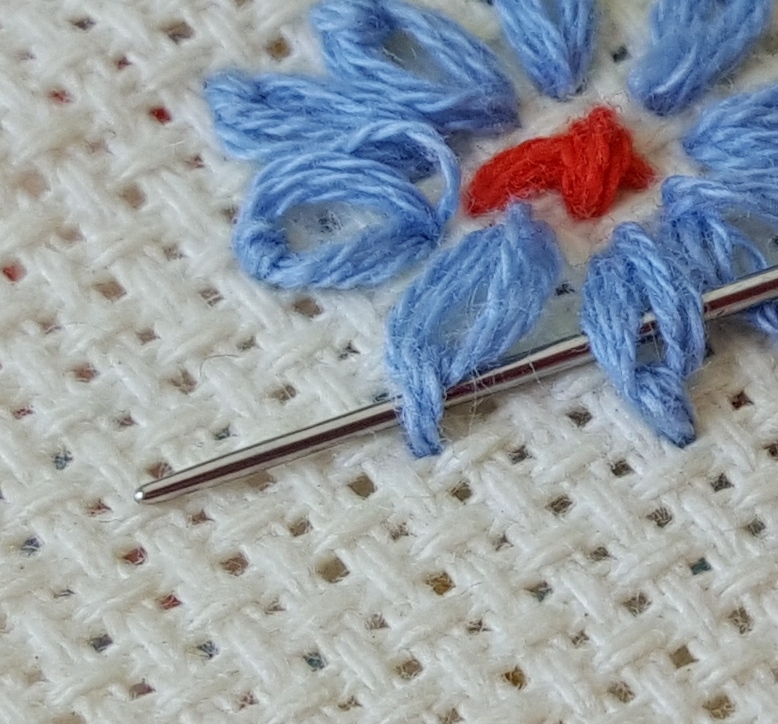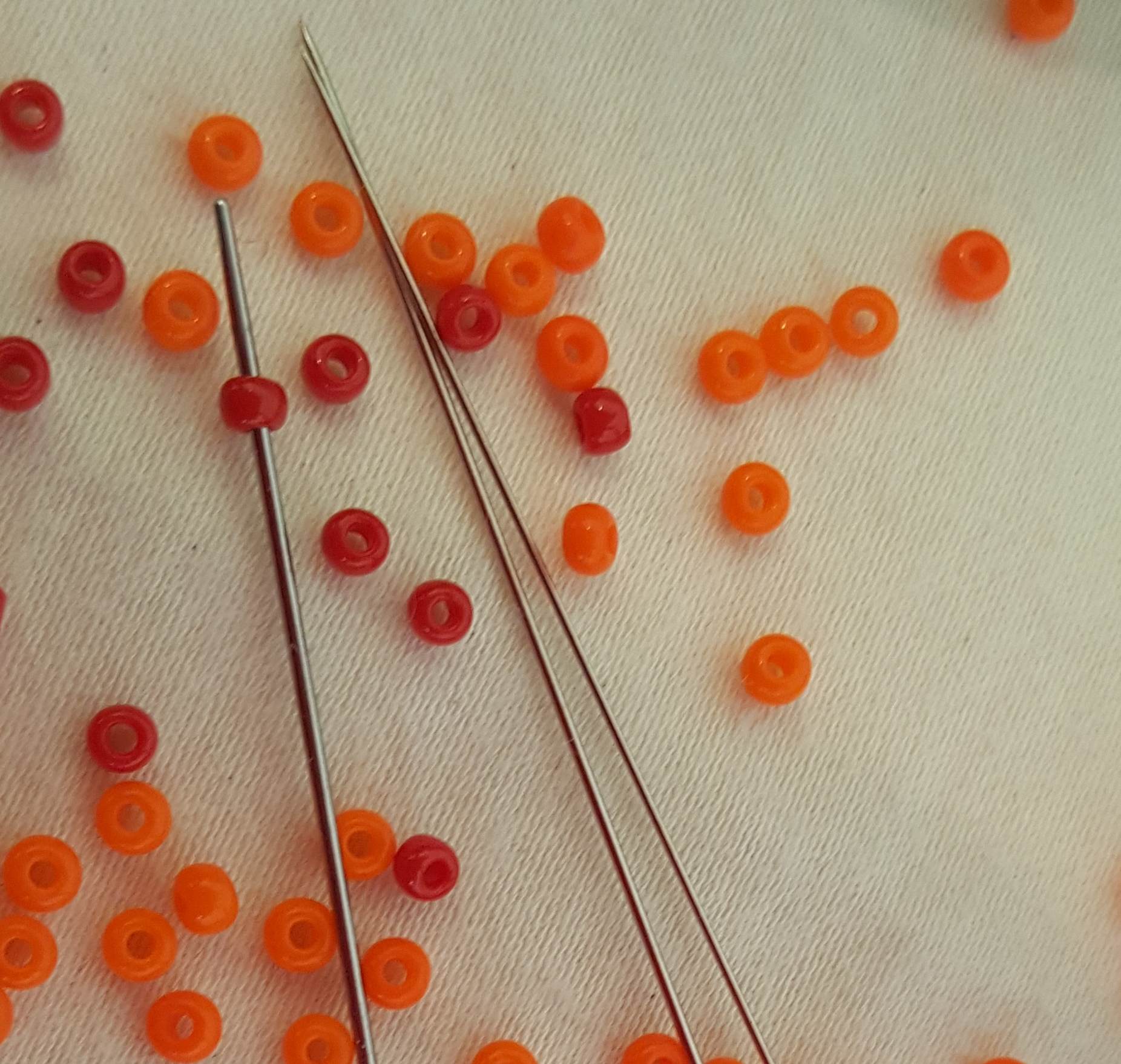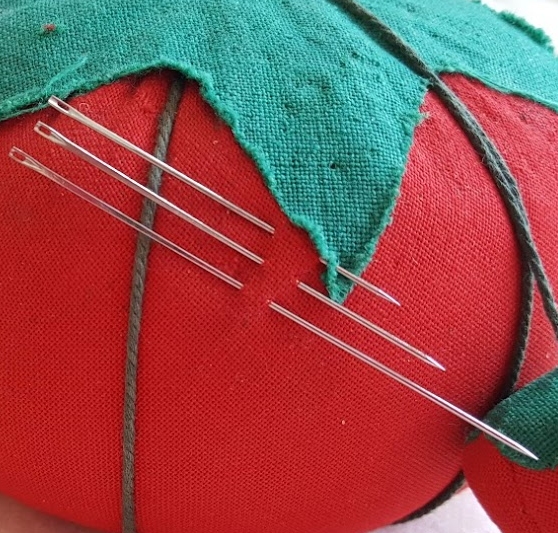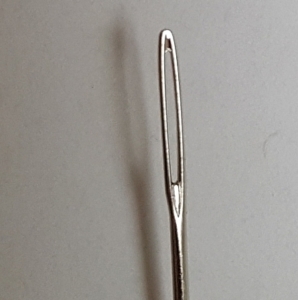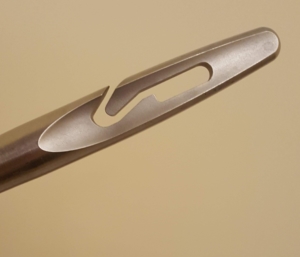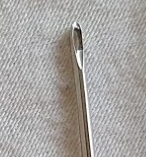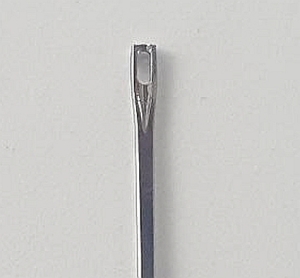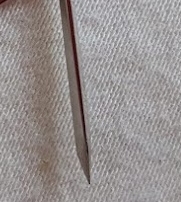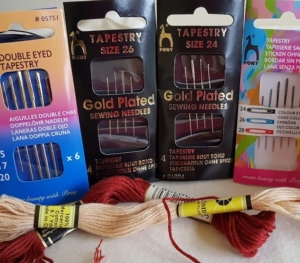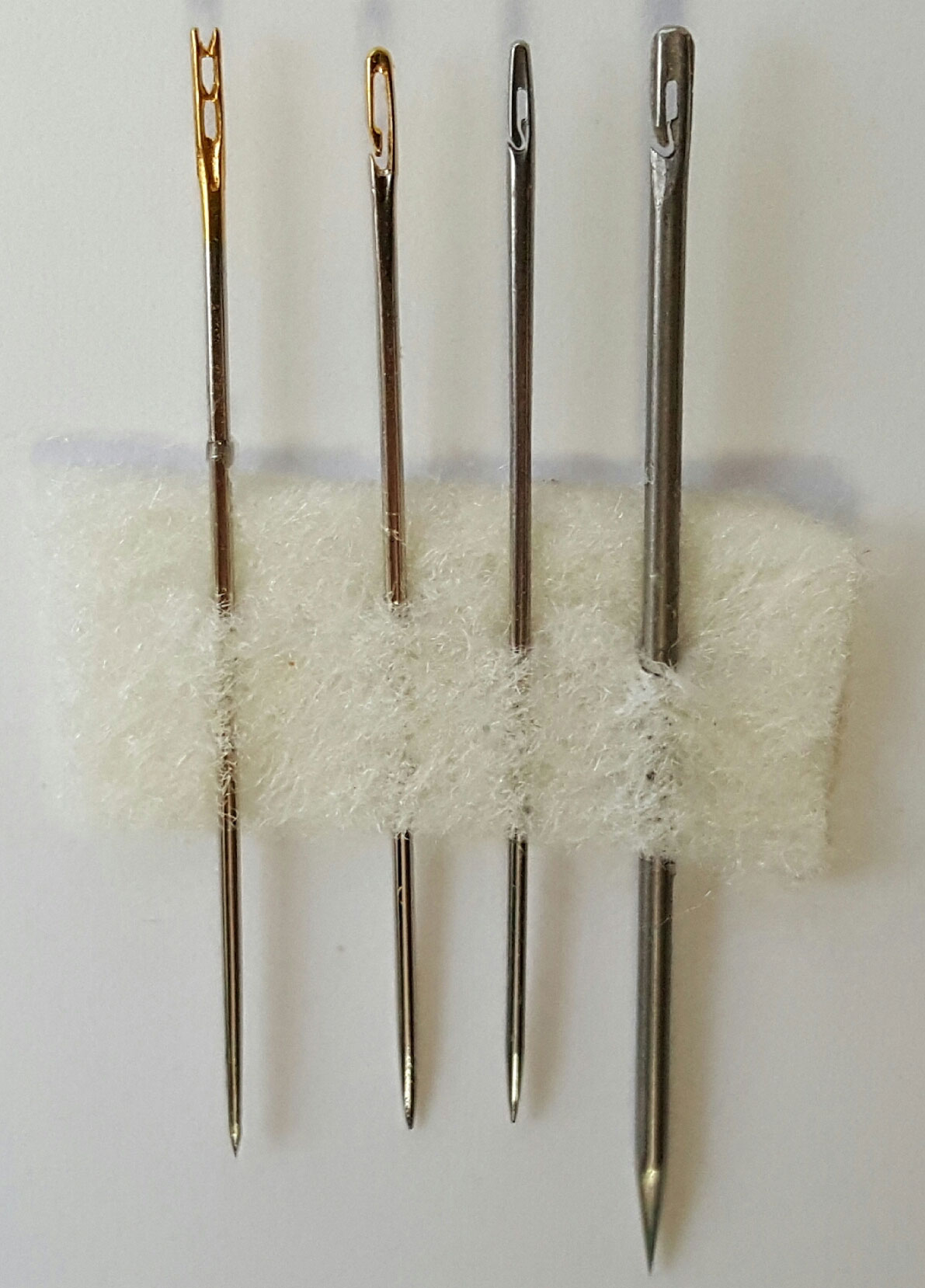Compare Self Threading Needles
What are the differences in easy-to-thread needles?
They go by all sorts of names. Self threading, easy threading, side threading, Calyx eye, French spring eye, Spiral Eye, SENCH, and the One Second Needle. What is the difference?
On the left: This is easy thread needle that has been around since 1850. In the medical industry it is called the French Eye. In the craft industry it is called the self threading or Calyx eye needle. You thread it by pulling a loop of thread down from the top and into the first hole. The second hole is created by the bridge they use to keep the needle eye stay closed as you sew with it. Unfortunately, your thread may shred as you thread your needle. It often times comes unthreaded as you sew. And the top points tend to hurt your finger if you push the needle when you stitch. They are made from nickel plated steel.
Next: is the side threading needle. Sew Right brand side threading needles have a gold plated eye to help you know which end has the point and which has the eye. They are made from traditional needle manufacturing processes using nickel plated steel. They are easy to thread and stay threaded as you sew.
The Spiral Eye Needle is a side threading needle as well. The slot goes into a channel that goes past a “stop bump” that locks your thread inside the eye. It also is there to strengthen the eye. The Spiral Eye Needle is made from stainless steel which is less brittle than iron so it will bend rather than snap and break under pressure.
On the right is the One Second Needle. In 2010 Pam licensed the rights to her patent to Telebrands, the as seen on TV company, who sold a side threading needle called the One Second Needle. It was very large, made of unknown metal and the geometry was not kept so they tended to catch on your material. They was sold in all the stores and came with a small red box full of little notions. It has been discontinued.
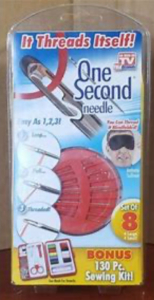 I licensed the rights to make the side threading needle. Telebrands sold it “as seen on tv.” They discontinued the One Second Needle over 8 years ago. I now own the trade marked name “One Second Needle” and the Patent for all side threading needle. So if you buy any package that looks like this package on the right it is an illegal knock off of my invention and I need to contact the person(s) selling it to the person you bought it from…I am pretty sure whoever you bought it from is not aware they are selling an illegal product.
I licensed the rights to make the side threading needle. Telebrands sold it “as seen on tv.” They discontinued the One Second Needle over 8 years ago. I now own the trade marked name “One Second Needle” and the Patent for all side threading needle. So if you buy any package that looks like this package on the right it is an illegal knock off of my invention and I need to contact the person(s) selling it to the person you bought it from…I am pretty sure whoever you bought it from is not aware they are selling an illegal product.
I have licensed the rights to that name, “One Second Needle,” to HemLine brands. HemLine brands is selling a legal version of my patented needle under the name “One Second Needle.” If you buy a One Second Needle from anyone except Hemline you are unknowingly buying an illegal knock off.
That is not your fault. It is the fault of the seller and most of the time they had no idea they purchased knock off products from China, and I just need to let them know they are not allowed to sell them. No harm no fowl, but every time someone buys a knock off and they are unhappy about the quality, I get to hear about it, which isn’t fair.
If you run across a One Second Needle being sold that does not have the Hemline brand name on it, PLEASE drop me an email so I can let them know they are breaking the law. Many people buy from China and China does not honor patents so illegal products can accidentally be sold in the USA. Your help in identifying illegal “One Second Needle: is appreciated. Pam@TheNeedleLady.com


